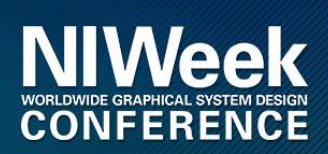Abstract—As strategic-grade instrumentation becomes increasingly more complex and accurate, developing robust,
You are here
Electronics Functional Test
In-Circuit vs. Functional Test
As manufacturing processes improve and circuitry has moved from discrete components to highly-integrated programmable components, effective test strategies must now place more emphasis on functional test rather than in-circuit test (ICT).
In-circuit test performs a “schematic verification” by testing individual components of a printed circuit board (PCBA) one at a time by comparison against a software model of some parameters of the component. It is not done “at speed” and does not verify interoperability but is very effective at finding manufacturing defects.
ICT excels at:
- Read more about In-Circuit vs. Functional Test
- Rob Putala's blog
- Log in or register to post comments
From the Experts: Automated Test Best Practices
Obtain some best practices for building automated test systems from leading experts. This presentation, featuring Bloomy's David Moschella, covers the full test process from analyzing test requirements and developing the tester architecture to optimizing test throughput and deploying test systems.
ATE Best Practices Presentation

Bloomy had a strong presence at NIWeek 2014, with the biggest Alliance Partner booth that included an engaging bicycle generator that hundreds tested their stamina on, as well as many presentations by Bloomy staff in various conference tracks.
Customer
Phoenix Contact GmbH & Co. KG is a worldwide leader in the development and manufacturing of electrical connection, electronic interface and industrial automation technologies.
Challenge
Phoenix Contact requires a highly flexible automated test cell capable of testing multiple products. The system must gate product flow at multiple stages, not allowing an operator to proceed with a product which has failed testing at any point.
Customer
Brooks Automation, a leading worldwide provider of automation, vacuum, and instrumentation for semiconductor manufacturing (www.brooks.com).
Challenge
Replace legacy automated test equipment with a “universal” Printed Circuit Board Assembly (PCBA) manufacturing test platform capable of functional testing a wide range of PCBAs. The legacy system employed scores of cable harnesses constructed with DB-50 style connectors. Operator errors in cable hookup risk damage to product and test equipment.
Customer
Symmetricom (now Microsemi) is the leading source of timekeeping and extremely precise synchronization technology for use by many industrial and government applications worldwide. Their Chip Scale Atomic Clock technology enables atomic clock technology in portable applications by its extreme size, weight and power reductions.
Customer
Zoll Medical Corporation (ZOLL), a leader in medical devices and software solutions.
Challenge:
Minimize the test engineering labor involved in the development and validation of manufacturing automated test equipment (ATE) for ZOLL’s defibrillator products. Replace a legacy in-house rack-and-stack ATE approach with a standardized functional test platform that can be quickly replicated and adapted for new products.
functional test, maximized.
This document suggests various circuit configurations and design items to aid the design and production of printed circuit board assemblies (PCBA) that will be testable by typical automated test equipment (In-Circuit, Functional and JTAG).
